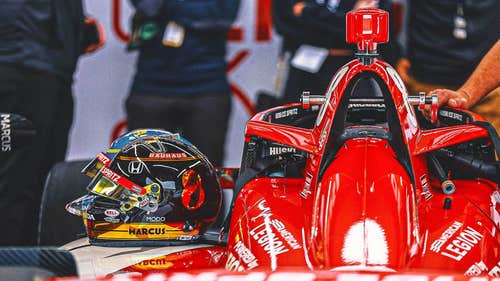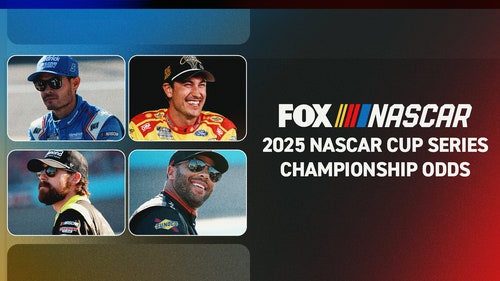
Sato trying to help smallest quake victims
Shortly after landing on a long flight from France, Takuma Sato, like so many other passengers, turned on his cell phone.
While the other passengers' phones dinged and ringed here and there, Sato's was going off like a winning slot machine, more than 100 voice mails, e-mails and texts lighting up the tiny screen and his ears.
It was March 11 and while Sato was cruising above 30,000 feet, the ground in his native Japan had shook violently, setting off a catastrophic wave of destruction and water that left thousands dead.
''It just kept ringing and I wasn't sure what was happening,'' Sato said. ''The friends and families and everyone was calling. It was a really shocking thing that happened.''
Once the initial jolt of the situation wore off, Sato decided to do two things: Climb back in his IndyCar to start driving again and set up a program to help children affected by the quake.
The driving part wasn't easy at first.
Sato had been in Japan before the quake, stopped in southern France to see his wife and two children, and had come back to the United States to test at Barber Motorsports Park for KV Racing Technology.
Problem was, the testing was just a couple of days after the earthquake and Sato was still shaken as he watched the aftermath on TV and heard from family and friends back home.
''It hit him hard,'' KV Racing co-owner Jimmy Vasser said. ''We had the first test right after and he just wasn't there. He was somewhere else and understandable, just like we were; we didn't get hit in LA, but with 9/11, people were (angry) and depressed, similar to what he's going through.''
Not long after the Barber test, Sato decided he wanted to do something to help.
The 34-year-old driver made a trip to Japan and though he was in Tokyo, where there were no obvious signs of the devastation, he could see the residual affects on the country and its people. What struck Sato most was the impact the earthquake and subsequent tsunami had on the children of Japan, the thought of so many little ones suffering striking a chord in his heart.
So as the IndyCar season geared up for its first race, Sato started the wheels in motion to create ''With you Japan,'' a program designed to support the children of his home country, both in the initial weeks after the quake and for years to come.
Sato got it rolling by giving an impassioned speech at the driver's meeting before the season opener at St. Petersburg and received an overwhelming response, with drivers across the circuit giving him autographed race gloves to auction off.
Sato also has planned numerous fundraising events, including speaking engagements, merchandise sales, celebrity memorabilia auctions and phone text donations. All proceeds will help the smallest victims of the Japanese earthquake.
''There are thousands and thousands of children who lost their mother father, brothers and sisters, family, friends - it's just so hard to imagine what the children are going through in a situation like this,'' he said. ''For that, I wanted to help as much as I could.''
Being in the race car has been a way for Sato to take his mind off what's happening back in Japan. For those few hours of testing or racing, he can concentrate on making his car go as fast as it can rather than the devastation back home.
And he's going plenty fast.
A rookie coming over from Formula One, Sato had to take a few lumps a year ago as he got used to a different style of racing.
Not only were the cars a big change, the tracks were completely different than F1's smooth, ultra-fast circuits. Starting with the dusty, overly bumpy street course in Brazil, Sato had to adjust with a new type of course and a new style of racing at each stop.
A superbly technical driver, he did the best he could with the various tracks, but didn't have the mental or computer database to know what to do where. Sato ended up 21st in the standings with one top-10 finish, which, considering the sharp learning curve he faced, wasn't too bad.
''This kind of racing is more like a video game with the different kind of tracks,'' Vasser said. ''You can get bumpy, smooth, street, fast oval, short oval and he was just barraged with all kinds of things he had never seen before, and had to deal with it. He did a great job with it.''
This season, Sato now has that database to pull from, knows what to expect from his car and is better able to convey to his crew what needs to be done.
He also understands the IndyCar racing mentality.
In Formula One, the scoring system is geared so that only the top finishers earn points, currently the top 10. In that format, it made sense for drivers in the back of the pack to do anything possible to get near the front, even if it meant potentially wrecking their car or another.
In IndyCar, points are awarded throughout the field, so staying on the track is crucial. Drivers want to be aggressive - they won't be successful if they aren't - but have to know when to pick their spots.
Sato needed time to figure that out.
Many times last season he found himself trying to get around a car and would try a move that wasn't, well, exactly prudent. It was aggressive, just not worth the risk. As a result, Sato went out with contact in nine of 17 races last season, though not all the crash-outs were his fault.
This season, the analytical Sato has adapted his mindset and avoided the pitfalls of trying to do too much at the wrong time.
Nowhere was that more evident than at the season opener at St. Pete, where Sato found himself on the outside almost every time on restarts, a precarious position under IndyCar's new double-file procedures on green flags.
Instead of barreling into the corners and potentially causing damage, Sato let two, sometimes three cars pass, then made up the ground later. He ended up finishing a career-best fifth.
Sato had a little trouble at Alabama, the second race, and was caught by contact at Long Beach, but used his patient-but-still-aggressive ways to finish eighth at Brazil. He heads into the Indianapolis 500 brimming with a confidence that comes from the comfort level a second go-round on the IndyCar circuit and the solid results he's had through the first four races.
''There are so many things you need to learn, particularly on this competition level,'' he said. ''This year, it all seems to come more natural. I feel more comfortable in the car, more comfortable with my environment.''
And he's trying to make the children of Japan more comfortable while doing it.







